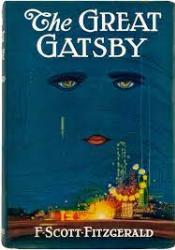"The Great Gatspy" by F. Scott Fitzgerald
- F. Scott Fitzgerald is one of the most influential authors in the twentieth century as he embodies the powerful allusion of the American Dream in his novel “The Great Gatsby.” This novel shows the themes of social class and wealth through the story of Jay Gatsby, a self-made millionaire, also to be seen as the American Dream. Readers soon discover the Jay Gatsby’s lavish lifestyle comes from the intention to receive the beautiful Daisy Buchanan’s attention. This goal of Gatsby reflects the intention for the pursuit of wealth in order to achieve happiness or pleasure. The conflicts that arise in this novel serve as parallels of outcomes of the industrial revolution. The poor social class is shown as the factory workers barely making it by as Gatsby and his other correspondents that own the factories and other industries live the high-life at the expense of the lower class. As Corrigan puts it, “Gatsby’s magic emanates not only from its powerhouse poetic style — in which ordinary American language becomes unearthly — but from the authority with which it nails who we want to be as Americans” (Corrigan). “The Great Gatsby” is a beloved novel as it highlights the American dream in the 1920s.
Corrigan, Maureen. So We Read On: How The Great Gatsby Came to Be and Why It Endures. Back Bay Books, 2015

